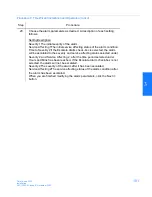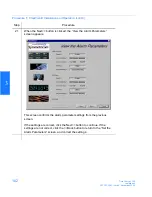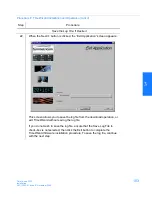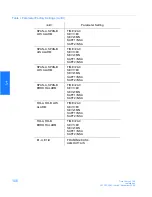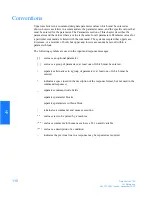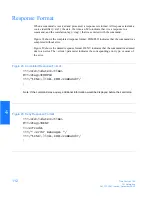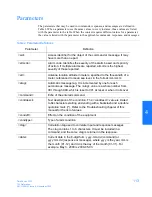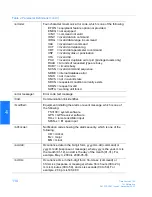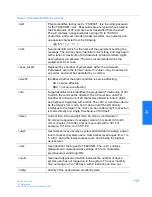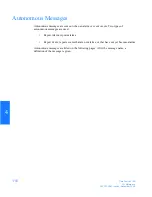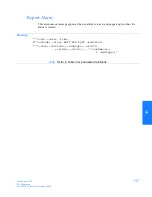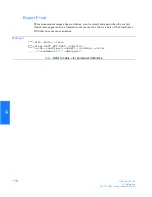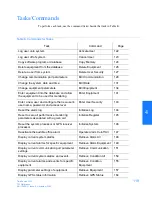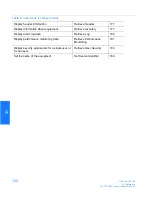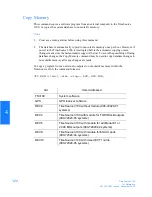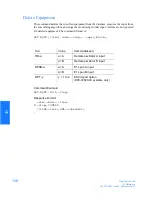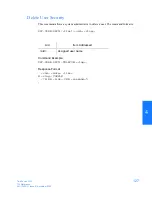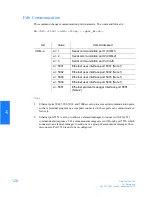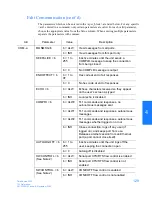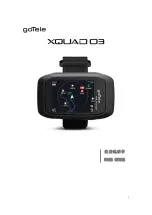
1
TimeSource 3100
115
TL1 Reference
097-72020-01 Issue 9: November 2003
2
5
3
S
S
S
S
S
S
S
S
S
S
S
S
S
S
S
S
S
S
S
S
S
S
S
S
S
S
S
S
S
S
S
S
S
S
S
S
S
S
S
44
<pid>
Private identifier, factory-set to “TS3000!!”. It is the initial password
for the TELECOM <uid>. Passwords are encrypted when stored in
the TimeSource 3100, and are never transmitted from the shelf.
The pid contains a case-insensitive string of 8 to 10 ASCII
characters, and must include at least one letter, one numeral, and
one special character from the following:
! @ $ % * ( ) + ’ ? / ‘ <
<sid>
Source identifier which is the name of the equipment sending the
message. The sid may be an identifier or text string, and may begin
with a letter. A maximum of 20 characters (limited to letters, digits,
and hyphens) are allowed. The sid is recommended to be the
equipment's CLLI code.
<spec_block>
Replaced by a number of parameters within the command.
Parameters are in the format <name>=<value>, may be entered in
any order, and must be separated by a comma.
<srveff>
Identifies whether the alarm condition is service affecting:
SA = service affecting
NSA = not service affecting
<tid>
Target identifier which identifies the equipment (TimeSource 3100)
to which the command is directed. The tid must be a valid TL1
identifier of a maximum of 20 characters (limited to letters, digits,
and hyphens) beginning with a letter. The <tid> is recommended to
be the target's CLLI code, but it can be null if the OS directly
interfaces to the target. The <tid> can be omitted only if connection
is made directly to a single TimeSource 3100 Shelf.
<time>
Current time in the six-digit form: hh-mm-ss (command) or
hh:mm:ss (response or message), where hh is hours (00 to 23),
mm is minutes (00 to 59), and ss is seconds (00 to 59). For
example, 5:11:49 a.m. is 05:11:49.
<uap>
User access level, used by a system administrator to assign a given
level of access to system users. User access level ranges from 1 to
5, with 1 being the lowest access level, and 5 being the highest
access level.
<uid>
User identifier, factory-set to TELECOM. The <uid> contains
alphanumeric, case-insensitive strings of 6 to 10 characters
provisioned as valid login IDs.
<uout>
User inactivity password which indicates the number of days a
system user has not logged on to the system. The user inactivity
time-out range is 0 to 180 days, with 0 indicating no time-out.
<vldty>
Validity of the performance monitoring data.
Table J. Parameter Definitions (cont’d)
Содержание TimeSource 3100
Страница 1: ...TimeSource 3100 GPS Primary Reference Source 097 72020 01 Issue 9 November 2003 ...
Страница 49: ...3 Chapter Installation This chapter provides the steps required for installation and power up ...
Страница 109: ...Chapter 4 TL1 Reference This chapter provides information for using the TL1 language ...
Страница 203: ...Chapter 6 Specifications This chapter provides equipment specifications ...

